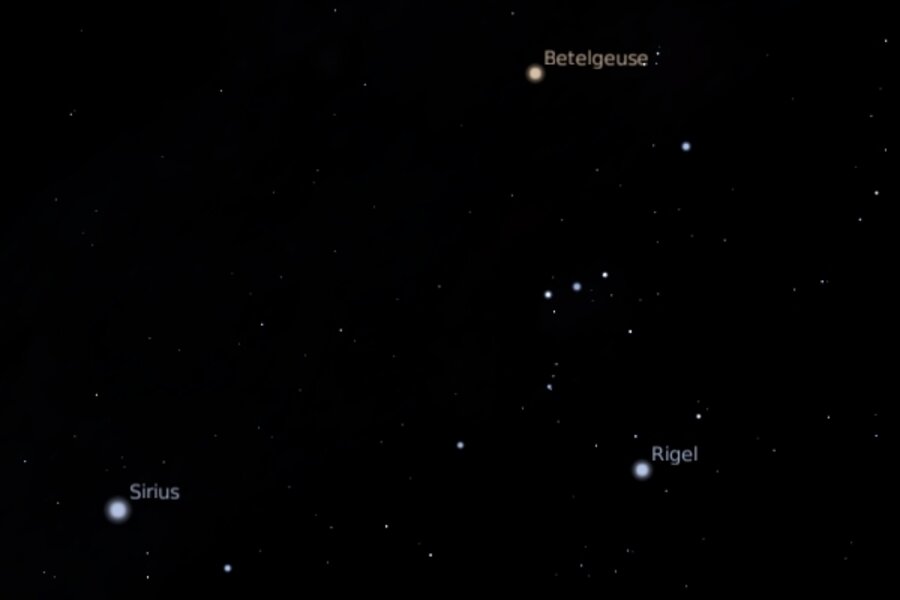Are astronomers watching the beginning of the end for Betelgeuse?
Loading...
Betelgeuse, a red super giant star that forms the right shoulder of Orion the Hunter in the winter sky, is putting on a spectacular show for astronomers.
The displays are yielding insights into the evolution of these behemoths, which end their careers as supernovae -- enormous explosions that leave behind a neutron star or a black hole.
Today, for instance, two independent teams of astronomers released their initial analyses of the most detailed images yet of Betelgeuse, giving hints as to the mechanism driving the star to expel vast amounts of material from its atmosphere. The studies have been accepted for publication in the journal Astronomy and Astrophysics.
The star is losing about one sun's worth of matter every 10,000 years. One team has used the European Southern Observatory's Very Large Telescope (VLT) in Chile to provide detailed images showing large plumes of material hurling away from the star, but in uneven patterns.
Using our solar system as a ruler and with Betelgeuse at the center, the star itself would swallow all of the planets from Mercury through Mars. One of the plumes would extend beyond Neptune.
The other team, also using the VLT, has been able to image large-scale turbulence in the star's atmosphere -- the first time this has been achieved for a star other than the sun. The work at infrared wavelengths provides confirmation of observations made at radio wavelengths in 1998 by astronomers using radio telescopes at the Very Large Array in Socorro, N.M.
Taken together, the radio and infrared data suggest that large-scale convection is driving the mass loss, the scientists say. Think of it as a gas ball whose internal fusion furnace brings it to a rolling boil. Rising masses of hot gas as broad as the star's radius reach the surface and give material near the surface a final kick.
You can download pdfs of the two formal papers here and here. A plain-English version of the results appears here.
While they live, red super giants spew vast amounts of material -- elements heavier than hydrogen and helium -- that represent the "exhaust" from the fusion reactions at their cores.
But their lives are short, measured in millions of years. Indeed, astronomers estimate that Betelgeuse is only about six million years old. It's likely to have exhausted its hydrogen fuel by now and is burning helium, forming carbon and oxygen. Once the burning works its way up the periodic chart of elements to iron, fusion stops, the star instantly collapses, then rebounds off a superdense core of pure neutrons in a blast called a supernova. From there it could remain a neutron star or continue its collapse to become a black hole.
Intriguingly, in June, a team from the University of California at Berkeley reported that since 1993, Betelgeuse has shrunk by 15 percent, at a pace that has been accelerating. And no one knows why.
The researchers, including Nobel Prize-winning physicist Charles Townes, are quick to point out that it's unclear if this is the beginning of a long-term trend or something cyclical.
As a supernova, Betelgeuse would be spectacular. The star is only 640 light years away. Astronomers calculate that it would be visible in broad daylight. At night, it would be bright enough to cast shadows.
By some estimates, the event could occur within the next 1,000 years. The last time humanity was treated to such celestial fireworks was in 1054, when a supernova appeared in the constellation Taurus. It too was visible during the day. Today, astronomers know its aftermath as the Crab Nebula.






